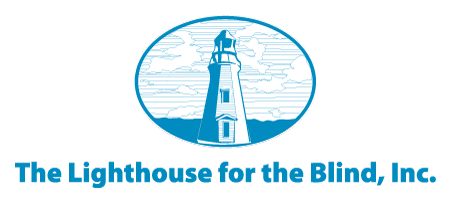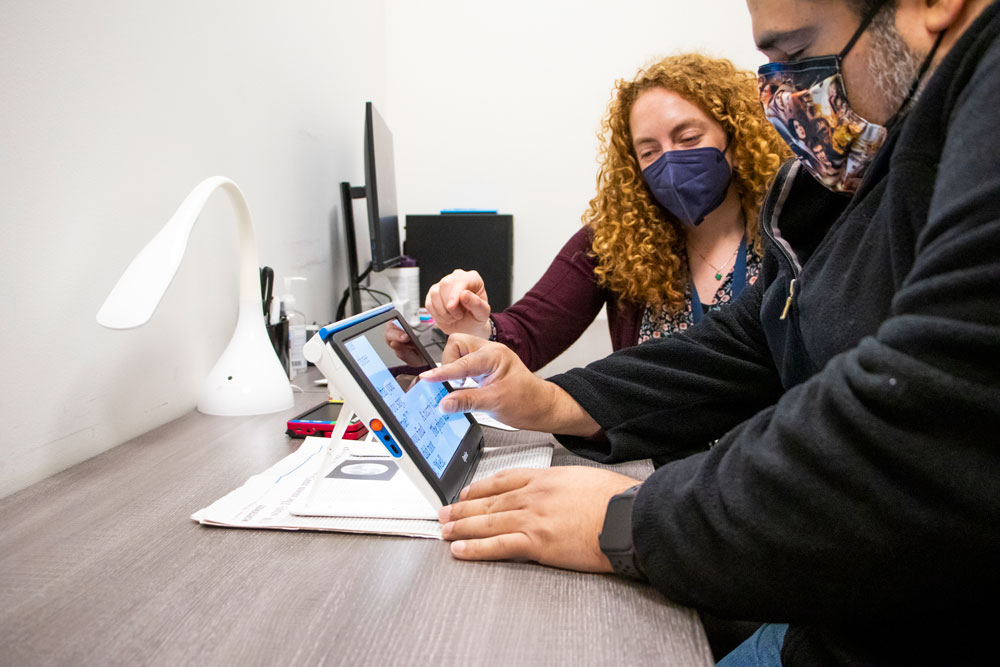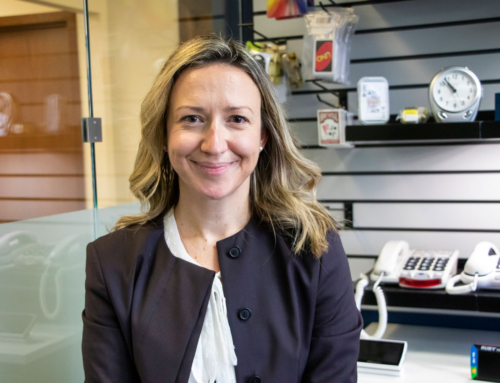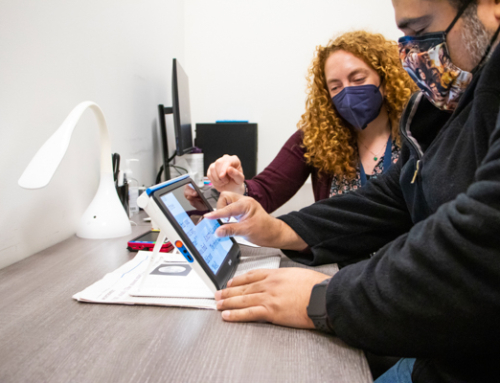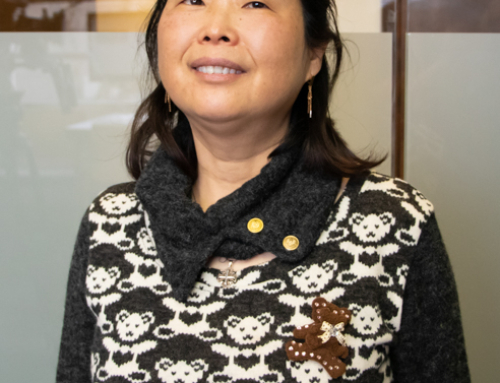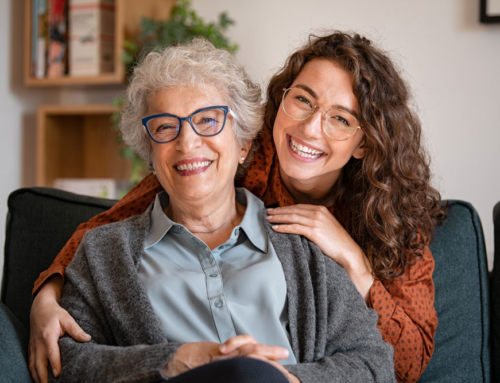Low vision can be a distressing experience, especially when people feel that their life activities are restricted due to their vision problems. However, with the help of an occupational therapist specializing in low vision, patients can gain back their independence and engage in their daily activities with ease. Maya Herzog, Occupational Therapist at the Lighthouse Low Vision Clinic, shares her expertise and insights into how she helps patients enhance their vision with assistive tools and adaptive techniques.
Bringing Hope to Low Vision Patients
Patients come to Maya for training and assistance with getting back to their daily activities that have become more difficult with vision loss. The loss of vision can have an emotional toll on patients. Many times, they may have already seen other doctors who haven’t been able to offer solutions. However, it is at our Low Vision Clinic that they’re able to find hope. While our staff can’t fix their vision, they can help them get back to the activities they want and need to do to improve their independence.
“We invite our clients into a community. Not only do we train with adaptive tools and techniques, but we also provide community resources and help connect people with low vision support groups. This gives hope and encouragement to our patients that is unique and valued,” shares Maya.
Different Conditions, Different Solutions
Particular types of eye conditions often require different solutions. “Glaucoma and retinitis pigmentosa, result in a loss of peripheral vision before impacting central vision,” Maya shares. “So, the need for Orientation and Mobility Services is typically higher. Sometimes there are also issues with glare sensitivity, so we can work with filters to prevent that. On the other hand, macular degeneration will typically result in challenges with detailed tasks due to its impact on central vision. In those cases, there is a higher impact on tasks such as reading, writing, and using computers.” she continues.
Tools and Techniques to Enhance Vision
One of the most important techniques for adjusting to low vision is to make things bigger, bolder, brighter, and bumpier. This includes implementing lighting, contrast enhancement, and magnification to everyday tasks.
“Things can pop out when you’re using a special type of light or you’re changing the color of something. It can be quite varied, the tools that we talk about. It really depends on the person’s goals,” she shares.
“There are many simple tools that can make a huge difference and allow people to do things they haven’t been able to do for a long time.”
Goals and Strategies for Low Vision Patients
Reading is one of the primary goals of many patients, especially for those with loss of central vision. Maya works with patients to enhance their reading skills by using magnifiers, lighting, and enhancing contrast. Additionally, Maya works with patients on tasks around the home, including cooking strategies, identifying products, organizing their medication and using phones and computers.
By training patients with adaptive devices, traditional magnifiers, and assistive technology like electronic magnifiers and talking devices, it’s possible for people with low vision to go about their daily lives easily and safely.
Low Vision Clinic
Take the first step towards regaining your independence and improving your quality of life. Learn about the comprehensive low vision services offered by Lighthouse Low Vision Clinic >>. Don’t let low vision limit you, let us help you see the world in a whole new way.
We’re Leaders in Blind Employment – View Our Open Positions and Apply Today!
The Lighthouse for the Blind, Inc. transforms the lives of people who are blind, Deafblind, and blind with other disabilities. We are leaders in blind employment. Through employment opportunities, we are a catalyst for empowerment. We foster self-confidence and instill a life changing affirmation that independence is possible. From our expertise in cutting-edge technology to our understanding of mobility, we help people who are blind, Deafblind, and blind with other disabilities live fulfilling lives.
